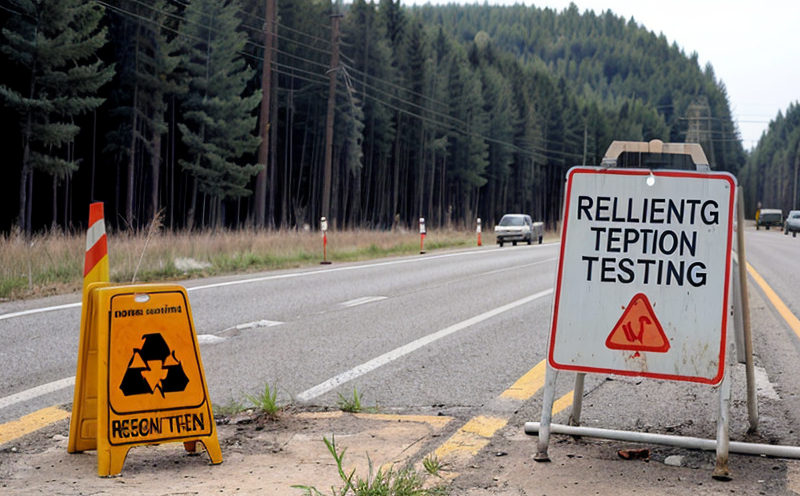ASTM D7289 Determination of Cesium-137 in Soil and Sediment
The ASTM D7289 standard provides a comprehensive method for determining the concentration of Cesium-137 (Cs-137) in soil and sediment. This test is particularly important for environmental monitoring, especially in areas with historical nuclear activity or potential contamination from various industrial sources.
Cesium-137 is a byproduct of nuclear fission reactions and has a half-life of approximately 30 years. Its presence in the environment can pose significant risks to human health due to its ability to accumulate in the food chain, particularly in plants and animals. Therefore, accurate measurement and monitoring are crucial for environmental protection.
The ASTM D7289 method involves several key steps including sample preparation, gamma spectrometry analysis, and calibration using certified reference materials. The procedure ensures that measurements are precise and reliable, adhering to international standards such as ISO 14663-1:2015 for soil sampling.
The test is designed to be sensitive enough to detect low levels of Cs-137, which can help in identifying potential sources of contamination. This sensitivity allows environmental scientists and regulatory bodies to make informed decisions regarding site remediation or further investigation.
For accurate results, it is essential that samples are collected according to ASTM D2777 guidelines for soil sampling. Proper sample preparation ensures that the Cs-137 content remains stable throughout the analytical process. The use of high-purity reagents and calibration standards helps minimize errors in measurement.
The analysis itself typically involves gamma spectrometry using a NaI(Tl) scintillation detector, which is capable of detecting low-energy photons characteristic of Cs-137 at 662 keV. The data obtained from the spectrometer is then processed to determine the concentration of Cs-137 in the sample.
It is important to note that this test does not differentiate between Cs-134 and Cs-137, both of which are common isotopes of cesium produced in nuclear reactions. However, environmental monitoring often focuses on Cs-137 due to its longer half-life and higher potential for bioaccumulation.
The results from ASTM D7289 can be used to comply with various regulatory requirements such as those set by the U.S. Environmental Protection Agency (EPA) or other national and international bodies. Compliance is crucial for ensuring that environmental standards are met, which helps protect public health and the environment.
In conclusion, ASTM D7289 plays a vital role in environmental radiation testing, providing a robust methodology for quantifying Cs-137 in soil and sediment samples. Its precision and reliability make it an indispensable tool for environmental scientists, compliance officers, and R&D engineers working in sectors affected by nuclear activity.
Why It Matters
The determination of Cesium-137 using ASTM D7289 is critical for several reasons. Firstly, it helps identify areas with potential contamination from nuclear activities or industrial processes involving radioactive materials. This information is essential for environmental protection and public health.
Secondly, accurate measurement allows for effective site remediation efforts. By knowing the levels of Cs-137 present in soil and sediment, environmental managers can prioritize clean-up actions to ensure they are addressing the highest risk areas first.
Thirdly, compliance with regulatory standards is a key benefit. Many countries have set limits on the allowable concentration of Cs-137 in the environment as part of their radiation protection policies. ASTM D7289 ensures that these limits are adhered to, thereby avoiding potential legal and financial penalties.
Lastly, this test supports research and development efforts aimed at understanding the behavior of Cs-137 in different environmental conditions. This knowledge is vital for improving remediation techniques and developing new methods for monitoring radioactive contamination.
Scope and Methodology
The ASTM D7289 standard outlines a method for the determination of Cesium-137 in soil and sediment by gamma spectrometry. The scope covers the collection, preparation, and analysis of samples to ensure accurate measurement of Cs-137.
- Sample Collection: Samples must be collected according to ASTM D2777 guidelines for soil sampling. This ensures that the sample represents the area being tested accurately.
- Sample Preparation: The samples are then prepared using high-purity reagents and calibration standards. This step is crucial to minimize errors in measurement.
- Analysis: Gamma spectrometry using a NaI(Tl) scintillation detector is used to analyze the sample. The detector measures the energy of gamma rays emitted by Cs-137 at 662 keV.
The results are processed and compared against known standards to determine the concentration of Cs-137 in the sample. Calibration using certified reference materials ensures that measurements are accurate and reliable.
Industry Applications
- Nuclear Power Plants: Monitoring soil around nuclear power plants for Cs-137 helps ensure compliance with regulatory standards and protect the environment.
- Mining Operations: Mining activities can introduce radioactive materials into the surrounding environment. Testing for Cs-137 helps identify potential contamination sources.
- Radiation Waste Sites: Environmental monitoring at radiation waste sites is crucial to ensure that contamination levels are within safe limits.
- Agricultural Land: Agricultural land near nuclear facilities or industrial sites may be affected by Cs-137. Testing helps assess the impact on food safety and public health.
- Forensic Science: In some cases, Cs-137 can provide valuable information in forensic investigations related to radiation accidents or incidents involving radioactive materials.





